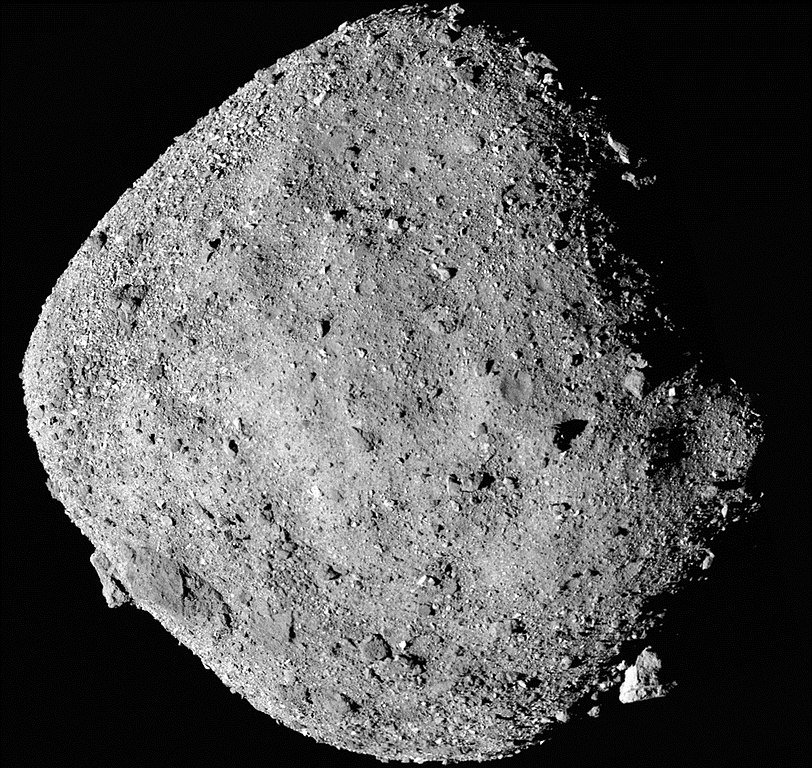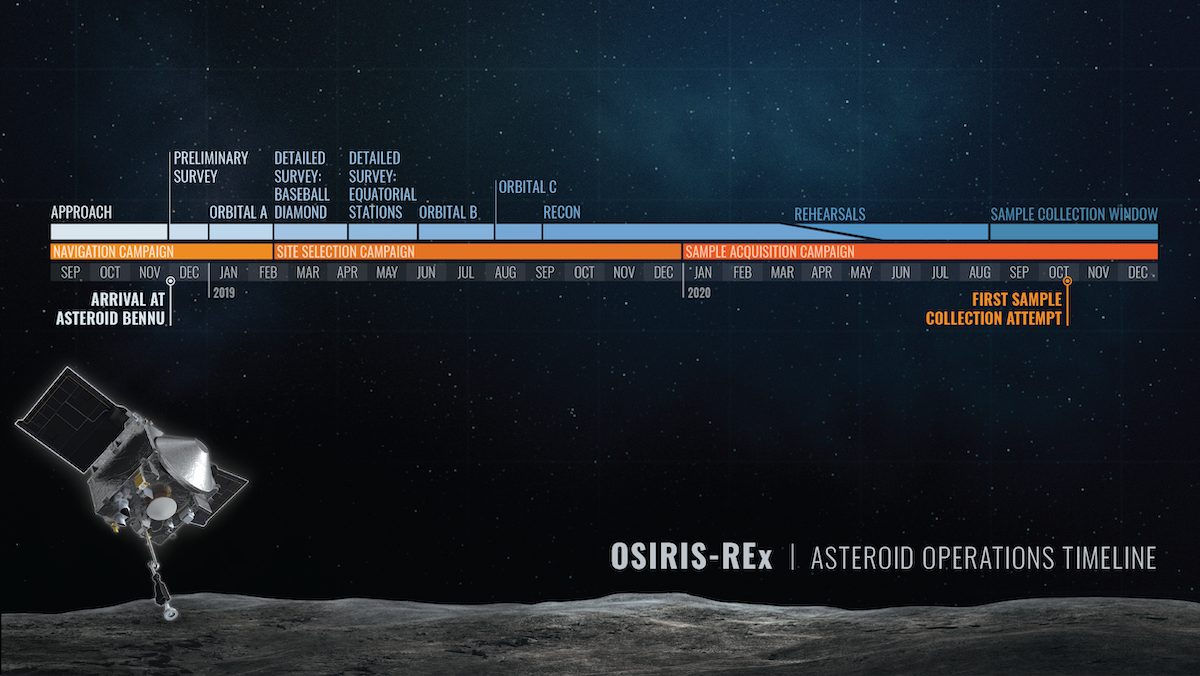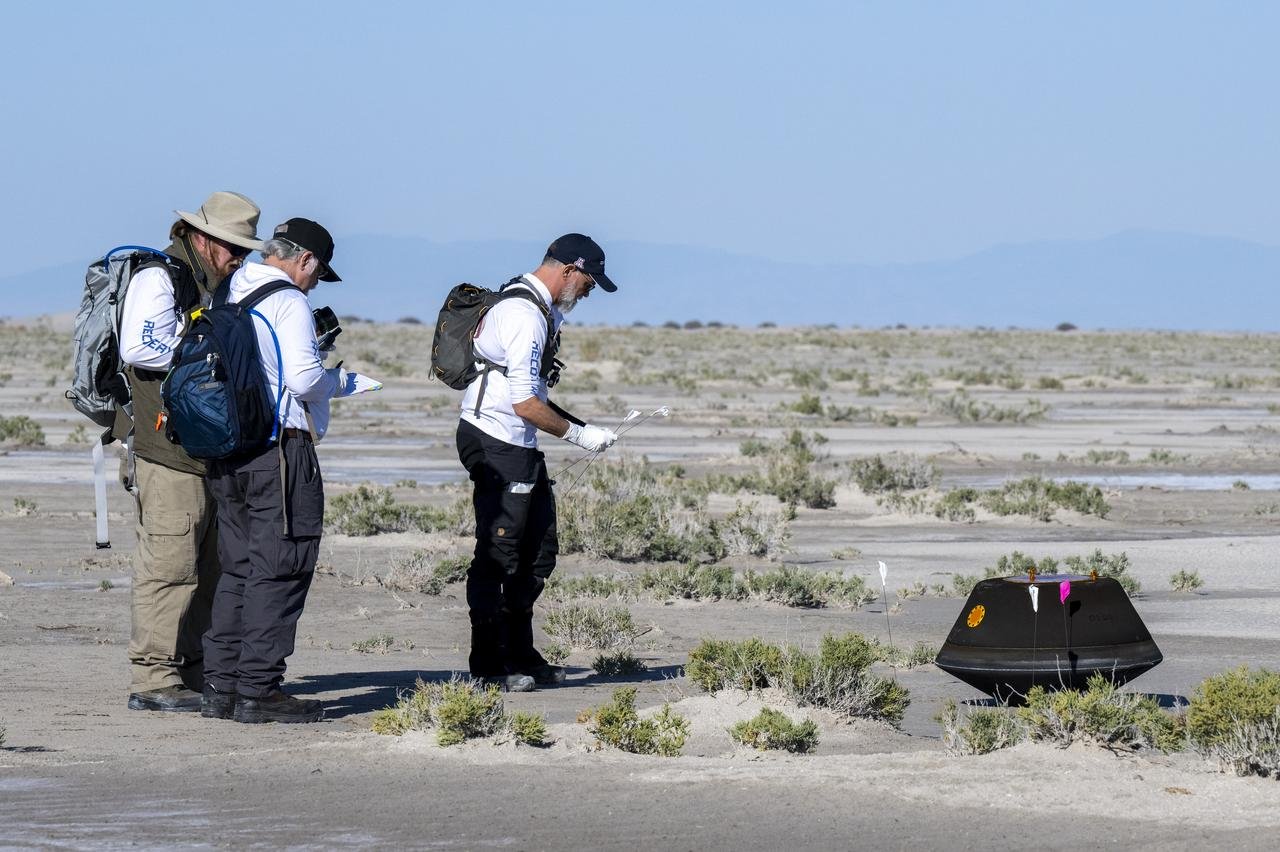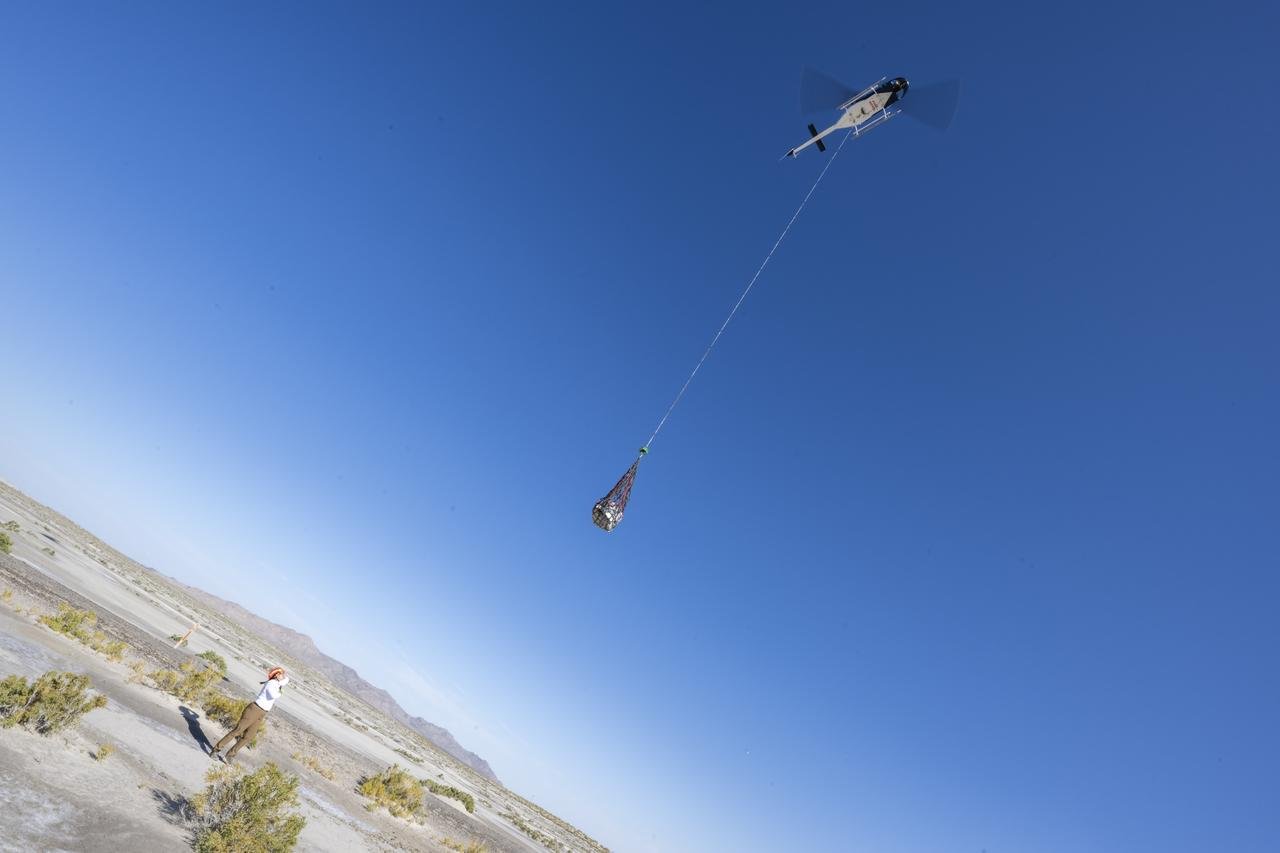
AiG Rocket Scientist Involved with NASA’s Historic Asteroid Mission
Headlines proclaimed the historic news just a few weeks ago: NASA successfully launched an explorer—OSIRIS-REx—that landed on an asteroid called Bennu, collected samples, and successfully delivered them back to earth! And I’m excited to share that our very own “Rocket Rob,” Rob Webb (one of our writers and speakers on creation apologetics), was involved with this mission.
Rob sent me a short write-up about the mission and his involvement before the launch in 2016. It’s an exciting example of observational science and a great reminder to those who claim otherwise that creationists can (and do!) do good science.
OSIRIS-REx (Origins, Spectral Interpretation, Resource Identification, and Security-Regolith Explorer) is the historic asteroid-sampling mission, launched in 2016 on an Atlas V rocket, that traveled to a near-earth asteroid named Bennu (arrived in 2018). Bennu, being one of several thousand near-earth objects, was chosen for this mission because of its well-known orbit, relatively large size, and richness of carbon-based material.1

Image of Bennu, captured by OSIRIS-REx, from a range of 15 miles (credit: NASA)
After doing a two-year detailed survey of Bennu from orbit, in 2020, it briefly touched down to collect samples from the surface. During this time, OSIRIS-REx also set two records: (1) Bennu, which has a diameter of only 1,640 feet, is the smallest body a spacecraft has ever orbited, and (2) OSIRIS-REx performed the closest orbit ever of a small body, at just one mile from the surface.

Timeline of OSIRIS-REx operations at Bennu (Credit: University of Arizona)
And (as if that wasn’t impressive enough!) after traveling on a 4-billion-mile round-trip journey to reach Bennu and then return home to earth, the spacecraft successfully delivered the samples to earth on the morning of September 24, 2023—marking the end of a long (and challenging!) seven-year mission. But actually . . . it’s not done yet! The spacecraft is now headed to a new target, the asteroid Apophis, where it’s planned to arrive in 2029 (hence the mission is now called OSIRIS-APEX).2
OSIRIS-REx released its sample return capsule (SRC),3 containing 250 grams of rocks and other material from Bennu, while it was about 63,000 miles above earth. The SRC reached speeds of 27,000 mph and temperatures around 5,000oF as it descended through earth’s atmosphere. The SRC deployed its main parachute and floated safely down to the desert floor of the US Department of Defense’s Utah Test and Training Range. (The descent from the edge of the atmosphere to the desert surface took only around 10 minutes.)
That morning, in a combined effort between NASA and the US Air Force, teams were deployed to the Utah desert to successfully recover the capsule. It was then hooked to a helicopter and airlifted to a cleanroom at the Dugway Proving Ground. From there, the asteroid material will be divided up among various space agencies, with NASA keeping ~70% of it at the Johnson Space Center and another ~25% shared between 200 scientists at 35 different facilities. Most of the remaining 5% will go to the Canadian Space Agency, with less than 1% (~0.5%) given to the Japan Aerospace Exploration Agency (JAXA).4
With the successful recovery of the Bennu samples, this historic event marked the first time NASA had ever landed samples of an asteroid on earth. During the live broadcast of the event, NASA’s Goddard Space Flight Center chief scientist, Jim Garvin, said this: “Touchdown for science! For the first time in history, we brought goodies back home from this kind of object. This is so huge, and we’re all breathing a big sigh of relief.”
Personally speaking, I helped get the OSIRIS-REx mission (literally!) “off the ground,” and so this was also a “big sigh of relief” for me as well! Specifically, I supported the GNC (Guidance, Navigation & Control) design and operations for OSIRIS-REx, which was certainly a challenging (but still really fun!) part of this exciting asteroid mission. Overall, it’s good to see the successful result of all that hard work from not just my efforts but also the hundreds of brilliant men and women who have tirelessly worked on this program for the last several years. No doubt, this accomplishment is one for the history books!
Plus, from a practical standpoint, asteroids like Bennu also contain an abundance of natural resources and precious metals. And if we can successfully mine those resources in the future,5 it would certainly benefit us here on earth, as well as help fuel (pun intended) the exploration of the solar system.
This mission ultimately glorifies God and points to his creative works.But most of all, even though the media at NASA continues to push an unbiblical (naturalistic) agenda with the OSIRIS-REx mission (for instance, according to NASA’s website, “This mission will help scientists investigate how planets formed and how life began. . . .”), this mission ultimately glorifies God and points to his creative works. From a biblical worldview, studying asteroids (like Bennu and Apophis) will help us discover more about God’s wondrous creation in the heavens.
“The heavens declare the glory of God, and the sky above proclaims his handiwork.” (Psalm 19:1)
We need more biblical creationists like Rob working in various science fields and pointing people toward the truth of God’s Word and the gospel. And that’s why we offer a variety of hands-on science programs at the Creation Museum and Ark Encounter—because we want to raise up the next generation of creation scientists!
If you have a child who is fascinated by God’s creation, check out our:
- Educational programs. Programs for kids (and adults) of all ages that combine hands-on science exploration with biblical worldview teaching.
- High school labs. These through-the-year or one-week summer intensives give students hands-on lab experience partnered with high-quality teaching that starts with God’s Word.
- STEM challenge, November 6, 2024. This is a one-day hands-on STEM competition at the Ark Encounter for ages 14–18. Teams of four students and one adult leader will be given a design task related to a STEM topic and must present their design to be evaluated by a panel of experts. This is a first for us, and we’re very excited! Register your team today.
Learn more about any of these programs, and more, at CreationMuseum.org/education.
Thanks for stopping by and thanks for praying,
Ken
This item was written with the assistance of AiG’s research team.
Footnotes
- As a secondary objective, studying Bennu also provides further insight into potentially hazardous asteroid movements. (Don’t worry . . . there’s nothing to worry about! The impact probability of it hitting earth is just 1 in 1,750, which means the risk is quite low.)
- If you’d like to learn more about this mission, including many of the key highlights over the last seven years, you can start by checking out NASA’s website: https://solarsystem.nasa.gov/missions/osiris-rex/in-depth.
- For those familiar with the Stardust comet sample return mission, the SRC comes directly from that mission.
- As a side note, JAXA already has two successful missions under its belt (Hayabusa 1 and 2) that collected asteroid samples from Itokawa (in 2010) and Ryugu (in 2020).
- You may think this is the stuff of science fiction, but in fact, multiple companies are now emerging for the expressed purpose of asteroid mining. For instance, the asteroid-mining startup AstroForge aims to achieve cost-effective extracting and refining of platinum-group metals from asteroids in the very near future. So, all that to say, this idea of mining asteroids could quickly move from the realm of science fiction to science fact!

Answers in Genesis is an apologetics ministry, dedicated to helping Christians defend their faith and proclaim the good news of Jesus Christ.
- Customer Service 800.778.3390
- © 2024 Answers in Genesis


